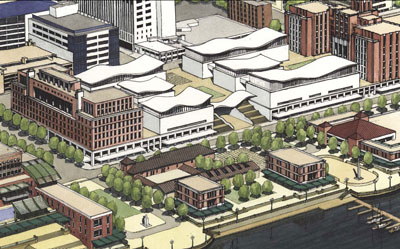In today’s installment of “Cat Logic,” we turn to Steve Tarter’s column in today’s business section of the Journal Star titled, “Destination Downtown.” I was unable to find it on the web for linking purposes, but here’s the gist of it:
Caterpillar Inc. hired Walker Parking Consultants (wow, a whole company dedicated to parking consulting — what a fascinating job that must be) to look at “a 13-block Downtown area that includes the former Sears block site for Caterpillar’s visitors center.”
Their findings? There’s a surplus of parking, and it’s anticipated that there will be a surplus of parking in the future:
In an area along the river bounded by Adams, Fayette and Harrison streets, consultants determined there were 5,011 parking spaces available with the highest use coming on a weekday morning when 64 percent of the spots were occupied. The lowest use came on a Saturday morning when only 15 percent of available parking was used.
Now, how would you, Average Joe, interpret those findings? If it were me (and I’m no high-paid executive or parking consultant), I would say we don’t need any additional parking created downtown. If, at the very busiest time of day less than 2/3 of the parking is being used, I’d say — we’ve got this problem licked. We’ve reached a saturation point; no more parking needed. Done.
What does Cat say?
Despite the finding, Caterpillar is looking for more parking at the location. “There’s a great deal of unused parking in that (Downtown) site. But Museum Square will depend on convenient parking of those visitors,” said Mark Johnson, Caterpillar’s project manager; referring to an underground parking garage that will add $3 million to the project cost while providing space for 189 cars.
Huh? Now, think about this a second. At the busiest time of any given week, not more than 64% of 5,011 spaces are being used. That means there are at least 1,804 spaces available within a 10-block area downtown at any given time. But Cat believes that the this site’s success will “depend on” having 189 more spaces (at about $15,873 per parking space) immediately on site. I’m gonna go out on a limb here and say a Six Sigma black belt hasn’t been working on this project.
Incidentally, note the central location of Museum Square in the study area:
All the parking in the 10-block area — between 1,804 and 4,259 empty spaces at any given time — is within two blocks of Museum Square. In fact, the majority of it is within one block. But according to Cat, that’s not good enough.
This is a colossal waste of money on top of an already flawed design for the Sears block. The Heart of Peoria Commission, which has been saying all along that we don’t need more parking downtown, has been vindicated by Cat’s own independent consultant’s study. But it doesn’t matter. Cat will continue on their present course, undeterred by the facts.

 “
“
